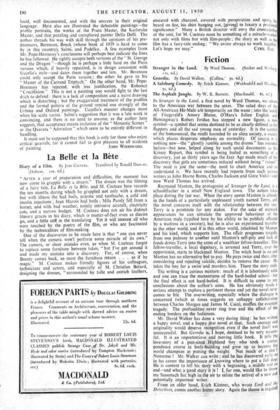La Belle et la Bete
Diary of a Film. By Jean Cocteau. Translated by Ronald Duncan.
(Dobson. cos. 6d.)
" AFTER a year of preparation and difficulties, the moment has now come to grapple with a dream." The dream was the filming of a fairy tale, La Belle et la Bete, and M. Cocteau here records the ten months during which he grappled not only with a dream, but with illness (he had boils, eczema and toothache, a cold and insulin injections ' • Jean Marois had boils ; Mila Parely fell from a horse), and with bad weather, noisily intrusive aircraft, electricity cuts, and a narrow budget. M. Cocteau does not air his distinct literary graces in his diary, which is matter-of-fact even as diaries go, and a little stiff in the translating Yet it will interest all who were touched by the poetry of the film, or who are fascinated by the technicalities of film-making. One of the discoveries to be made here is that " one can never tell when the camera won't perform some miracle of its own." The camera, or sheer mistake even, as when M. Cocteau forgot to replace some furniture between takes, " but I've got around it and made my mistake into a discovery. For, of course, when Beauty comes back, so must the furniture rbturn . . . as if by - magic." M. Cocteau makes friendly figures of his colleagues, technicians and actors, and especially of M. Christian Berard, designing the dresses, " surrounded by tulle and ostrich feathers, smeared with charcoal, covered with perspiration and spots, his beard on fire, his shirt hanging out, [giving] to Juxury a profound significance." . Many a British director will envy the comradeship of the unit, for'M. Cocteau must be something of a miracle-worker not only with films but with film-people ; the diary as well as the film has a fairy-tale ending: " We swore always to work together,


































 Previous page
Previous page